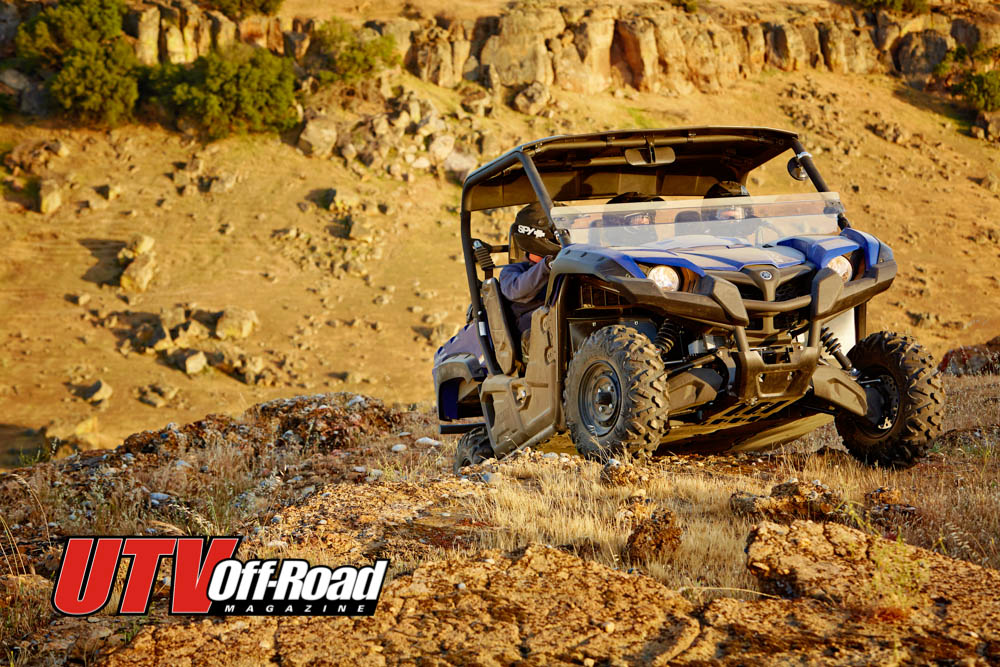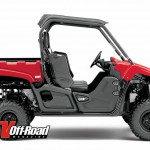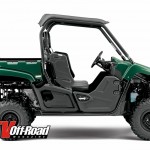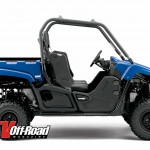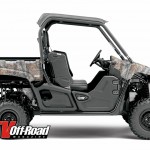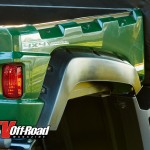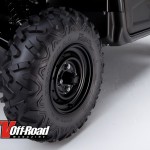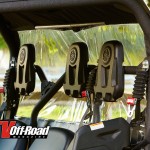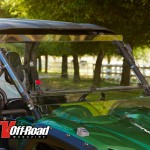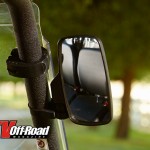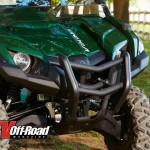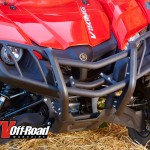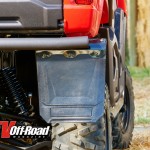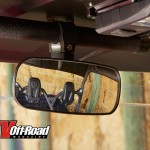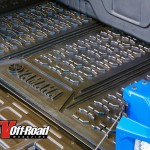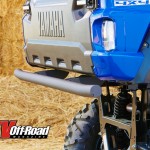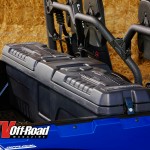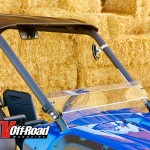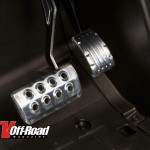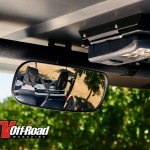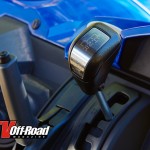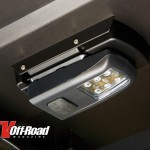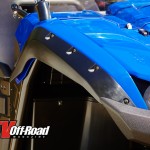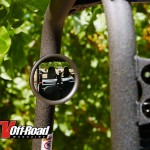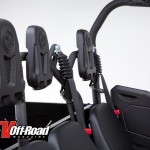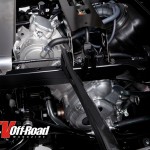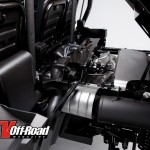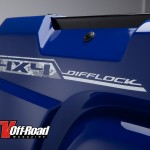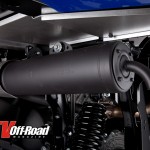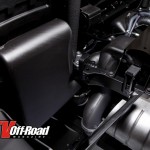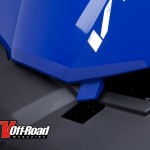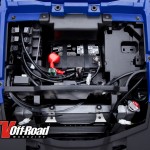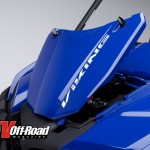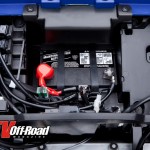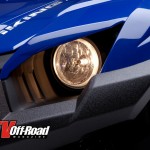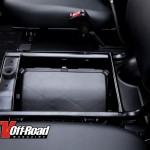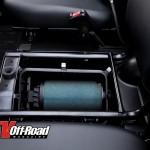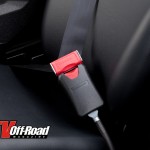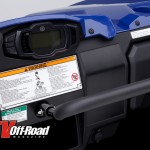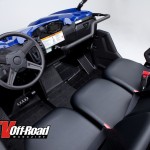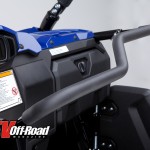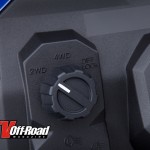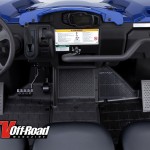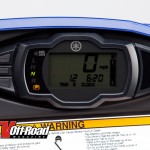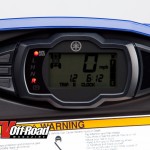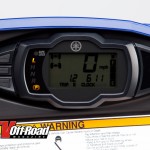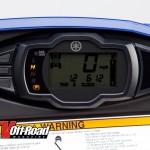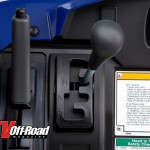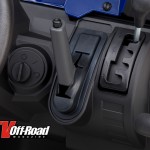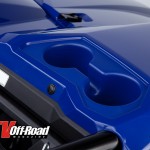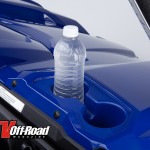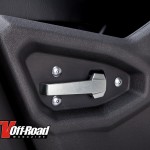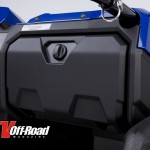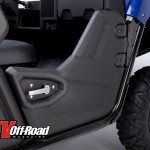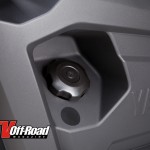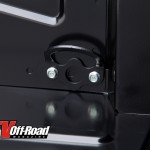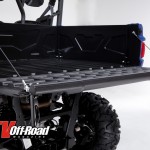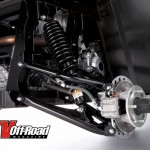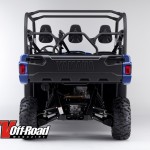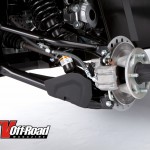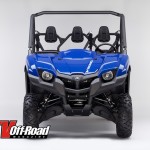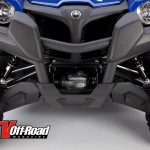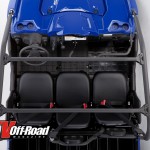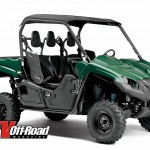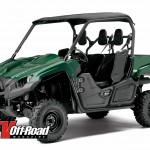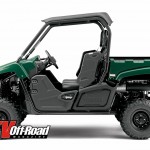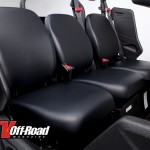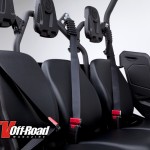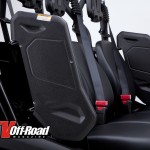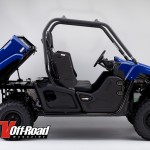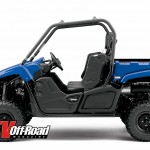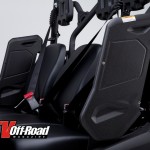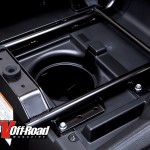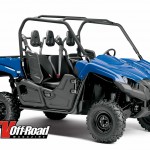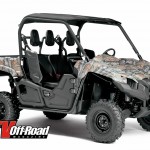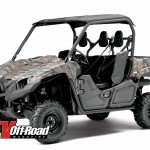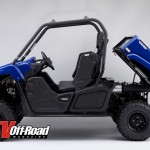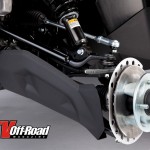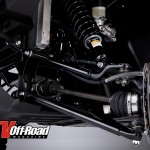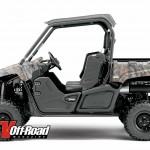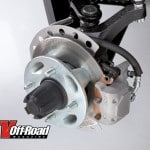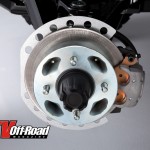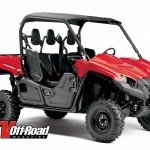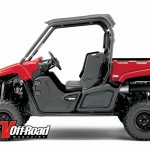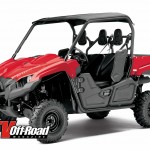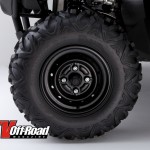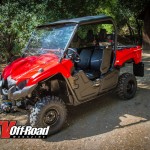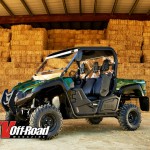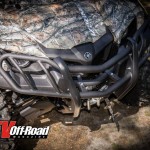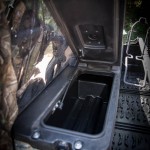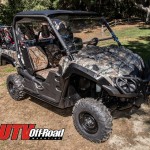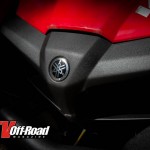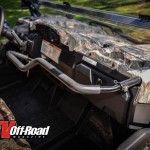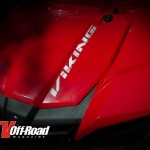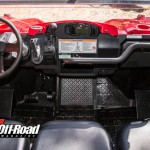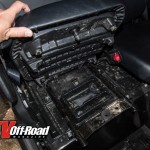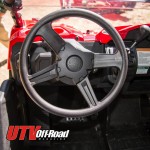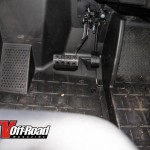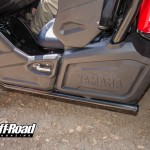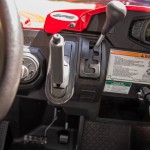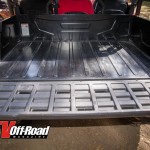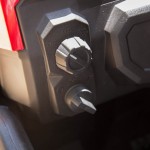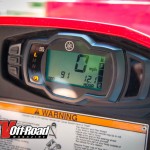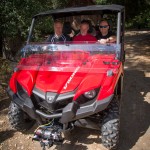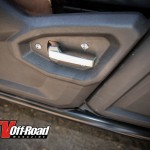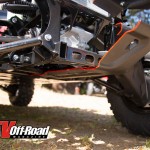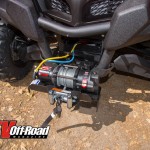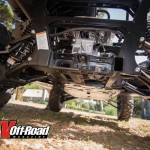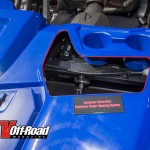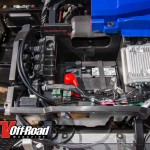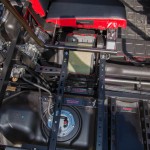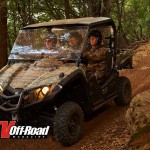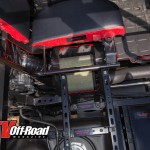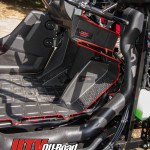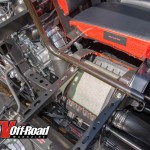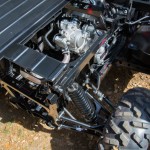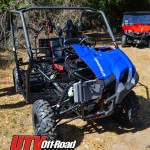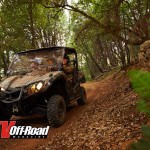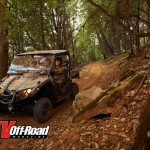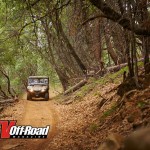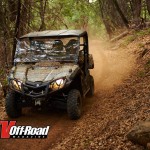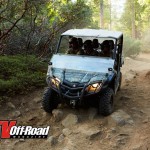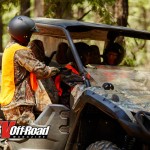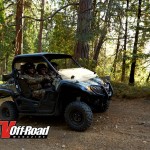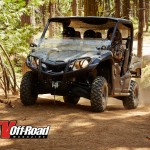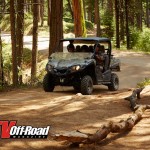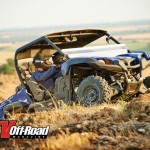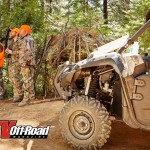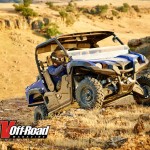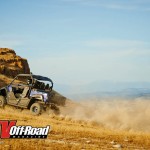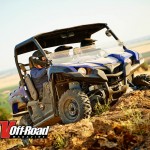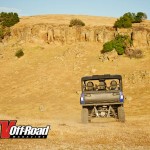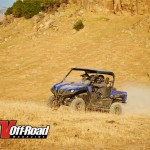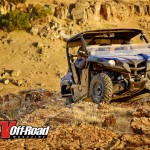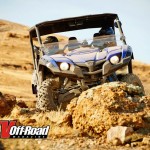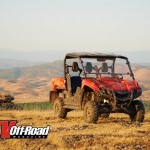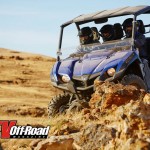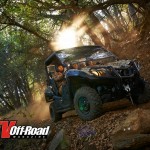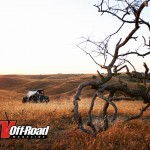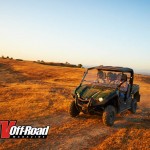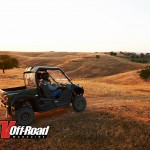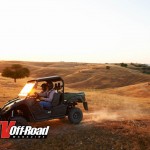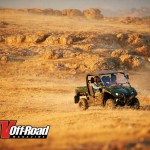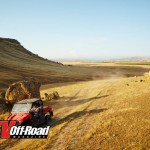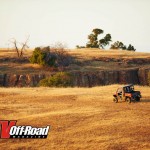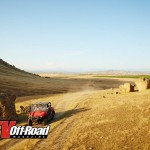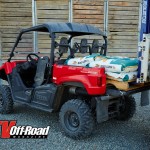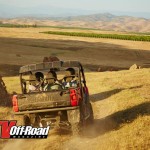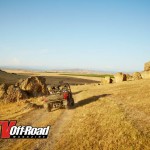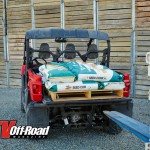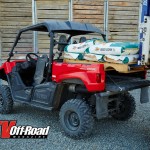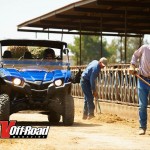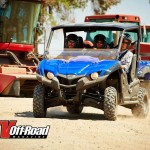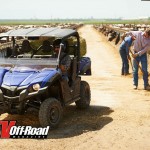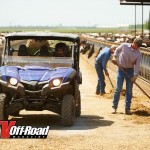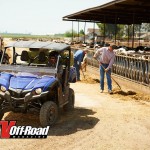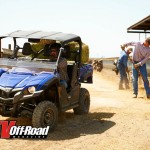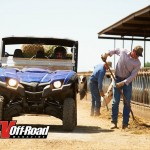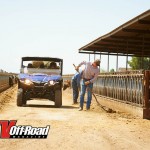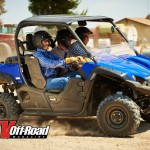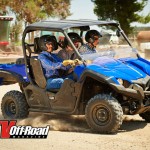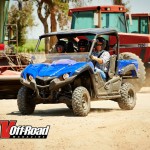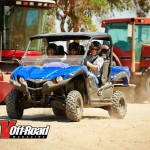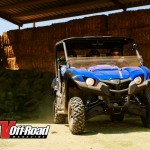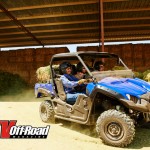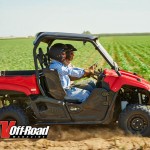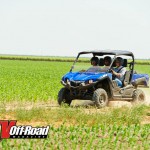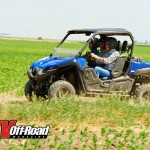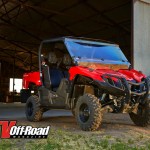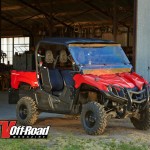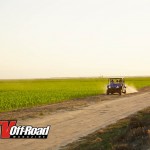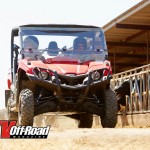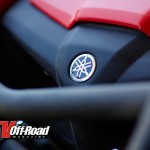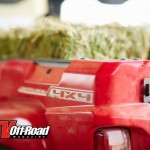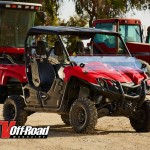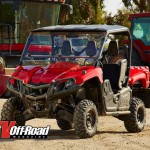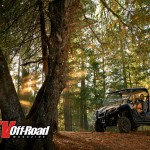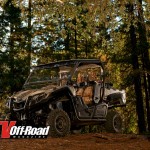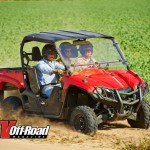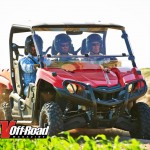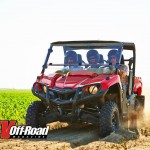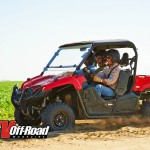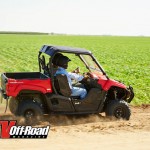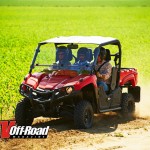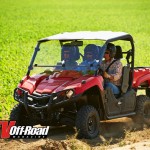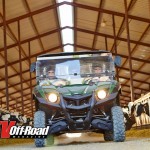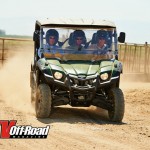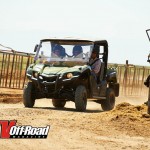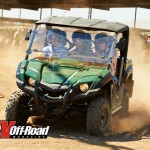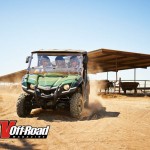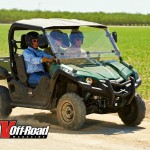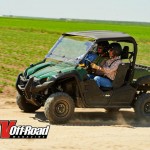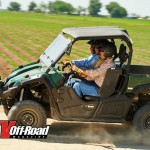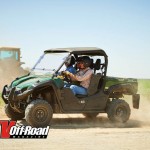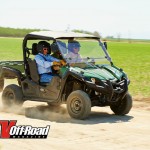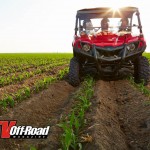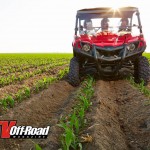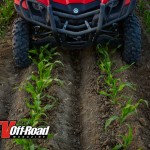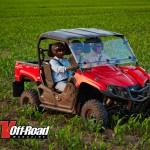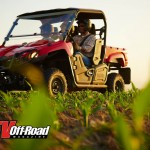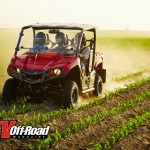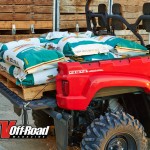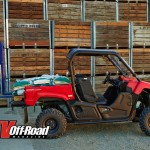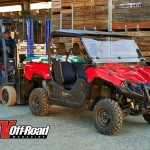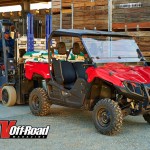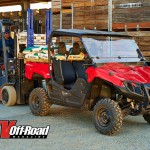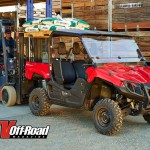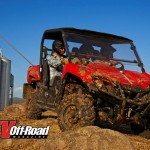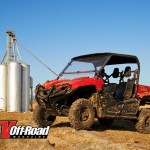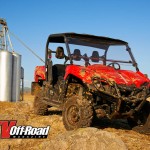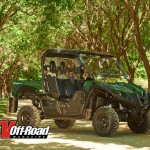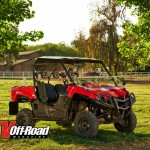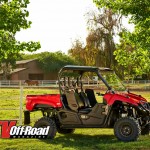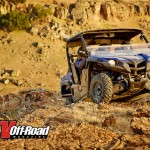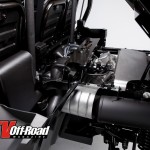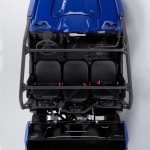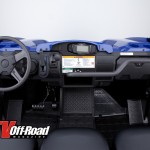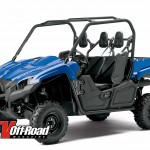Yamaha Aims to Once Again Reclaim the Sport/Utility Throne
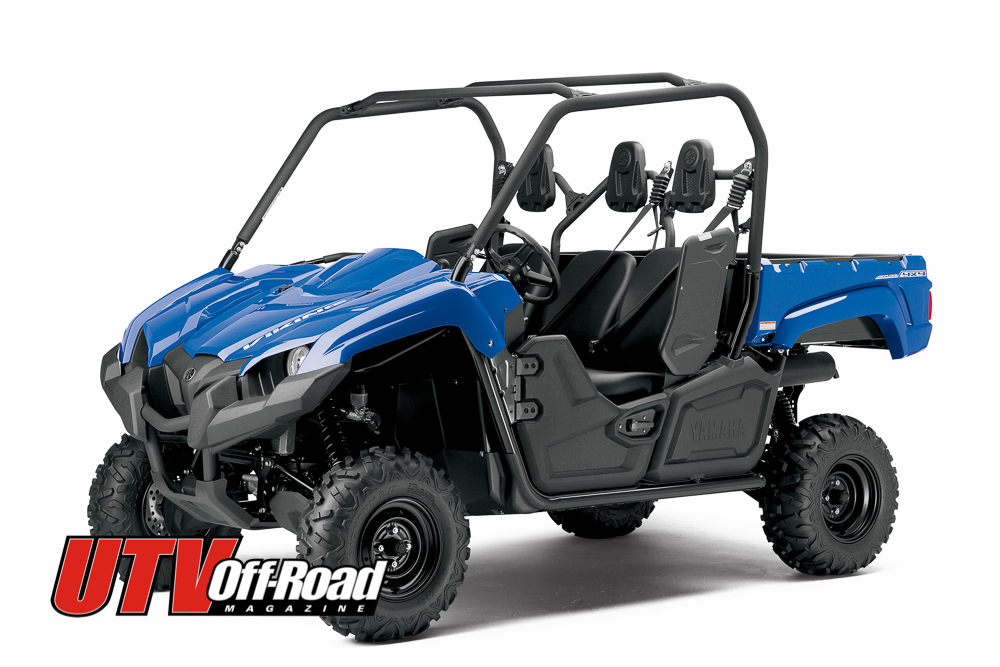
The Viking’s chassis is all-new, and despite its appearance, only some small parts are shared with the Rhino. The Viking is based on an all-new, wide architecture, with a track width of 61.8 inches. The wheelbase is 84.1 inches, which trumps the Rhino’s by 9 inches. Overall, the Viking is quite a bit larger than the Rhino, and to help carry that extra heft, the 686cc single cylinder engine has been overhauled. A higher compression piston (now at 10.0:1), a new cylinder head, and all new intake/exhaust systems bring the Viking’s power up above the Ranger 800, says Yamaha.
The Viking uses Yamaha’s Ultramatic CVT transmission uses an internal wet clutch to keep constant belt tension, and the CVT also features a sprag clutch to allow true engine braking in 4WD and reverse. The two-speed CVT trans allows the Viking to tow up to 1500 lbs via its two inch receiver. Out back, the bed is large enough to accept a standard-sized pallet. The steel dump bed has a 600 lb capacity that is securable via four tie down loops, and the bed can be tilted from either side of the vehicle. The bed latches with a handle at each side.
Yamaha’s venerable 686cc single engine has been newly adapted for the larger and heavier (1,342 lb) Viking. An all-new piston and cylinder head uses a single-port exhaust exit instead of the old dual-port design. New high-lift camshafts increase horsepower, and a secondary air injection system allows the Viking to meet future emissions standards. The engine has been tuned for more response and horsepower, and should be quite a bit more powerful than the Rhino. Top speed is around 50 mph. To slow it down, the Viking has been outfitted with four wheel disc brakes with dual-piston calipers at each corner. The solid discs provide good braking bite and pad wear.
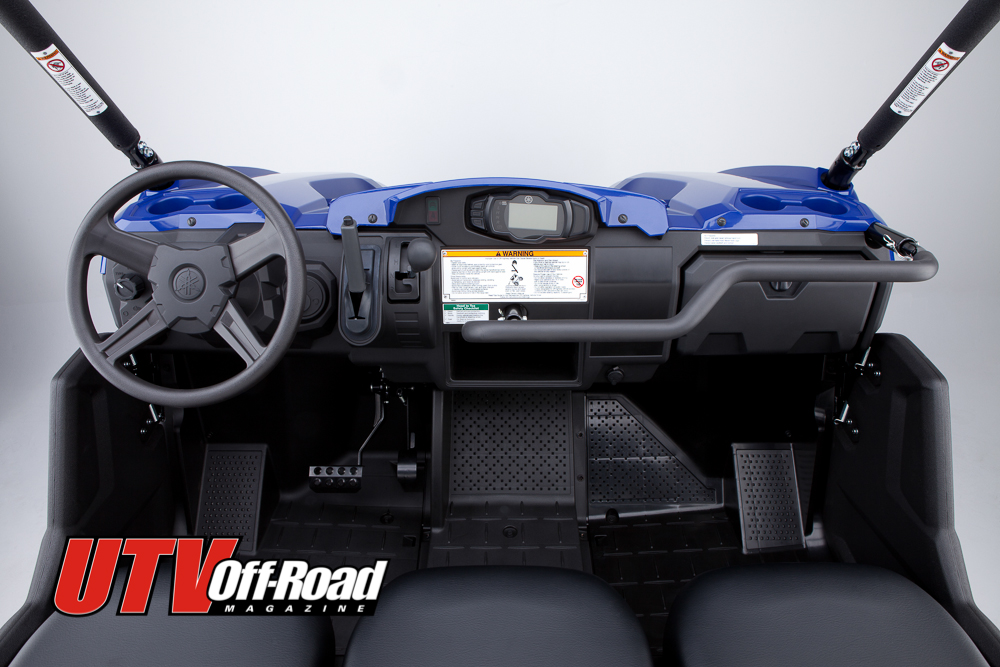
The Viking offers the industry’s first three-bucket seating arrangement. While all other three seaters use bench seating, Yamaha opted for three removable bucket seats placed in a Y-shaped arrangement. The seats utilize a three piece design; the backrests and headrests are affixed to the chassis, while the seat cushions remove with a quick-release tab. The added support and comfort from the buckets is welcomed for trail rides. In the cabin, the middle seat is set back further than the side seats to improve shoulder room. The floorboard of the Viking is flat, but offers textured grip panels and pockets for passengers’ feet. There is also an adjustable handhold for the two passengers. Electronic power steering aids in turning capability, but there is no tilt function in the steering column. The shift lever and parking brake have both been moved to the dash, allowing entry and exit from either side of the vehicle.
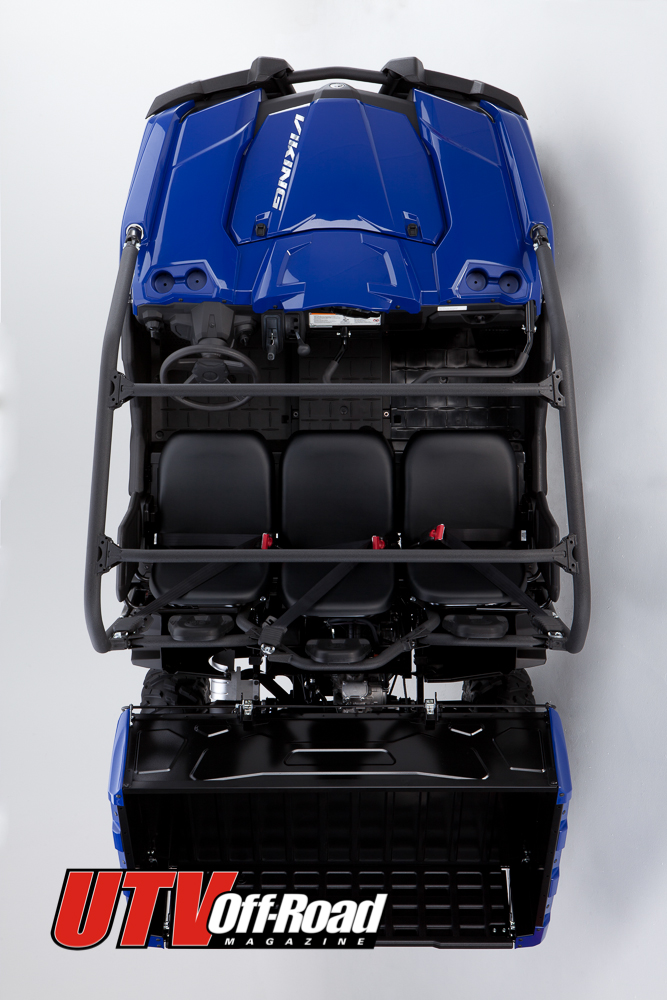
The new long-wheelbase design allowed Yamaha to grace the Viking with a ton of interior room, with best in class shoulder, leg, hip, and headroom. It also has the lowest-mounted seats in its class. Moving the engine under the bed allowed Yamaha to keep engine heat away from the cab as well, improving occupant comfort. Inside the cabin, a locking glovebox and four cupholders add to the convenience factor. Yamaha has even gone as far as to balance and strengthen the drivetrain to reduce engine vibration.
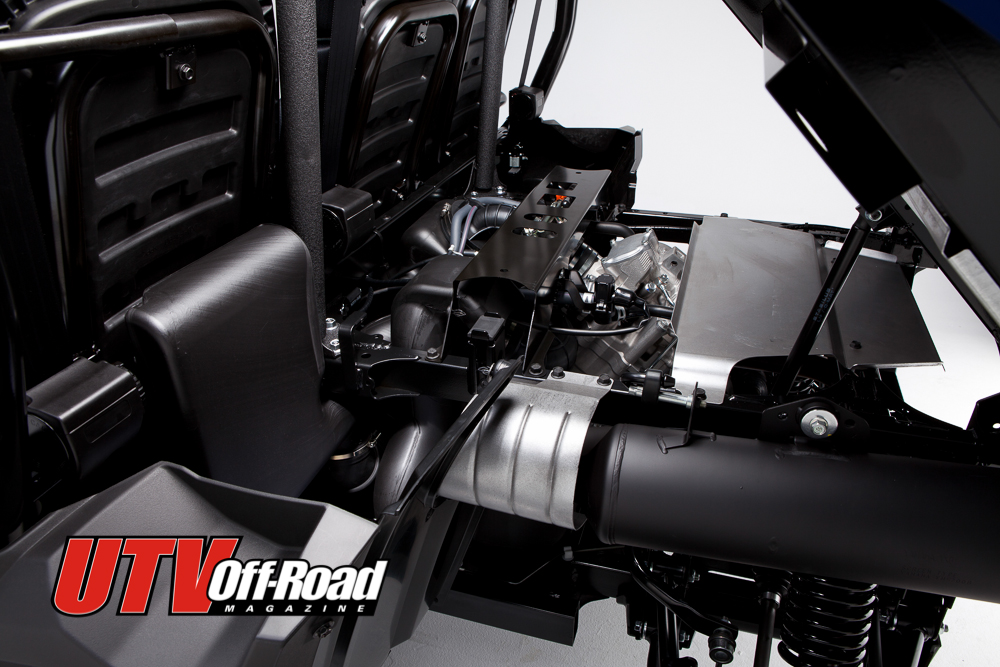
Other handy features that the Viking comes standard with include a molded sun top (except on Steel Blue models) and roto-molded latching doors. The half-doors resemble the units on the Rhino, but don’t come up as high. The Viking’s 12 inch wheels are wrapped in 25 inch Maxxis Bighorn 2.0 tires, which we are big fans of. It’s a relatively lightweight tire, offering great forward bite and predictable side slip. The Viking is available in Steel Blue, Red, Hunter Green, or Camo, with or without EPS. Pricing starts at $11,499 for the basic Steel Blue version, and ranges up to $13,249 for the Camo EPS version. This pricing is right in line with Polaris’ Ranger 800 HO EFI.
WHAT DO WE THINK?
While it may not be a RZR fighter, it was never designed to be. Yamaha’s new Viking looks like a lot of fun to drive, and with the added utility features aimed towards farm and hunting tasks, the Viking will be a forward contender in its category. The Rhino’s original formula of reasonable power, good brakes, a comfortable chassis, and great cargo capacity were great fun on the trails, and with the added size and power of the Viking, we know it will be too. We are sure that Yamaha’s track record of building tough and dependable vehicles will shine through with the Viking. That being said, we can’t wait to see what else is up Yamaha’s sleeve- we believe that this is just the first step to Yamaha’s comeback.
Yamaha SxS 2014 Pricing
$13,249 Viking EPS Camo (with suntop)
$12,699 Viking EPS Red and Hunter Green (with suntop)
$12,499 Viking EPS Steel Blue
$12,249 Viking Camo (with suntop)
$11,699 Viking Red and Hunter Green (with suntop)
$11,499 Viking Steel Blue
Yamaha Viking EPS Specifications
Model: YXM700PEG; YXM700PER; YXM700PEL; YXM700PHEH
Engine Type: 686cc liquid-cooled w/fan, 4-stroke; SOHC, 4 valves
Bore & Stroke: 102.0 x 84.0mm
Compression Ratio: 10.0:1
Fuel Delivery: Yamaha Fuel Injection (YFI)
Ignition: TCI: Transistor Controlled Ignition
Starting System: Electric
Transmission: Yamaha Ultramatic V-belt with all-wheel engine braking; L, H, N, R
Suspension/Front: Independent double wishbone; 8.1-in travel
Suspension/Rear: Independent double wishbone; 8.1-in travel
Brakes/Front: Dual hydraulic disc
Brake/Rear: Dual hydraulic disc
Tire/Front: AT25 x 8-12
Tire/Rear: AT25 x 10-12
L x W x H: 122.0 x 61.8 x 74.1 in
Wheelbase: 84.1 in
Turning Radius: 177.56 in
Ground Clearance: 11.8 in
Fuel Capacity: 9.7 gal
*Wet Weight: 1342 lb
Bed Capacity: 600 lb
Towing Capacity: 1500 lb
Instrumentation: Digital instrument panel boasts multifunction LCD display with speedometer, odometer, dual tripmeter, hour meter, 4WD status, transmission position, clock and fuel gauge
Lighting: N/A
Color: Hunter Green; Red; Steel Blue; Realtree® AP® HD
Available Accessories:
Visit yamahaaccessorycatalog.com
* Wet weight includes the vehicle with all standard equipment and
all fluids, including oil, coolant (as applicable) and a full tank of
fuel. It does not include the weight of options or accessories. Wet
weight is useful in making real-world comparisons with other models.
Always wear your seat belt, helmet, eye protection and protective clothing.
N/A – Information not available at press time.
Web: www.yamahamotorsports.com
All new for 2014:
Engine:
- The Viking is equipped with Yamaha’s most powerful 686cc engine with a broad, usable powerband. Four-valve head with 10.0:1 compression delivers optimum torque for virtually any workload, and up to a 30% gain in fuel efficiency.
- Electronic fuel injection ensures peak performance in nearly all conditions and elevations, along with instantaneous cold starts.
- Engine braking performance is provided across the entire speed range.
- Large-capacity air intake system contributes to the engine’s overall power development.
- New air injection system burns the un-combusted elements in the exhaust, resulting in even further reduced emissions.
- Specially designed drive system air intake helps prevent overheating and assists in keeping water and debris from entering the drive case.
- Convenient dash-mounted gated shift lever (L/H/N/R) provides simple Ultramatic transmission operation.
Chassis/Suspension:
- Yamaha’s proven electric power steering system is available on the Viking for excellent handling over all kinds of terrain.
- 11.8-inch ground clearance delivers maximum underbelly protection while enhancing terrainability.
- Large diameter front and rear wheel disc brakes provide unsurpassed stopping power, and the dash-mounted parking brake is simple and convenient to use.
- Standard center-mounted, heavy-duty 2-inch receiver-style hitch can tow up to 1500 pounds.
- Tough, rotomolded doors help keep mud, water and dirt on the trail where they belong.
- Stamped steel dump bed is rated to haul 600 pounds of gear, with two simple, yet proven latching levers on the left and right for maximum durability. In the bed are four standard tie-down hooks to help make sure cargo is strapped down securely.
Additional Features:
- The engine is located under the cargo bed and can be easily accessed when the bed is lifted.
- The seat layout is comfortable and versatile for three people. Padded head rests are included and the middle seat is set back for both driver and passenger comfort. The pass-through floor provides on-board ease of movement for getting in and out of the vehicle from either side.
- Digital instrument panel boasts multifunction LCD display with speedometer, odometer, dual tripmeter, hour meter, 4WD status, transmission position, clock and fuel gauge.
- Steel skid plate under the frame provides protection from rocks and ruts and helps prevent the Viking from getting stuck.
- Center hood access for battery and other electrical components ease maintenance.
- Latching glove box is included to store smaller items such as cell phones, wallets, etc.
- Dash-mounted parking brake for driver convenience.
- The Viking width is sized to help minimize row crop damage.
- The driver’s seat and passenger handhold are adjustable to maximize comfort and to accommodate the widest range of appropriately sized operators and passengers.
- Equipped with four in-dash cup holders for passenger comfort.
- Large, 9.7-gallon fuel tank allows for long rides.
- Under-seat, tool-free air filter is a snap to service.


